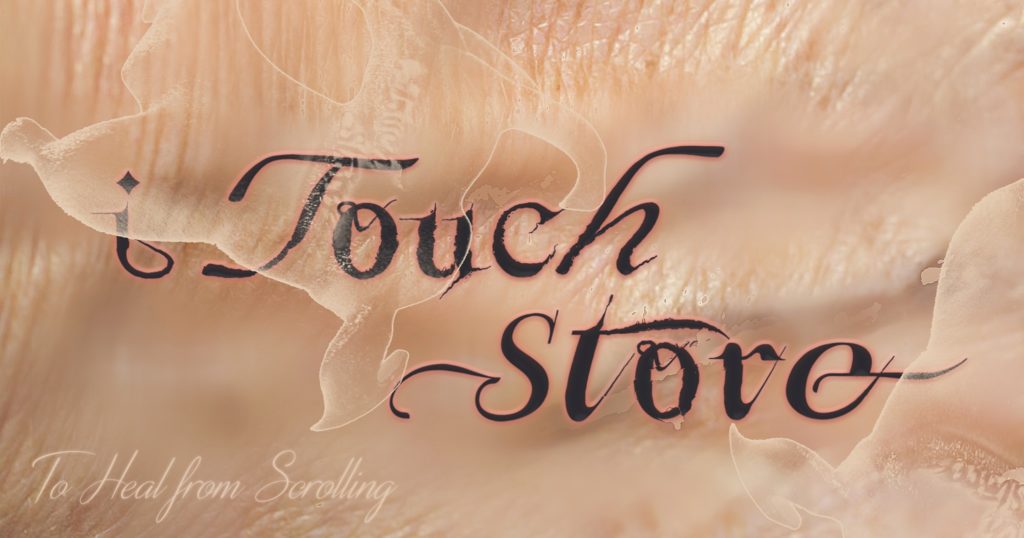The “iTouch Store” exhibition explores touch as a part of digital culture: the tactility of digitally transmitted jewellery images, given the excessive focus on the phone and the screen.
The jewellery and objects at the exhibition are meant to solve the potential problems of the digital age. The titles of the work speak for themselves: “Hot Not Only Online Phone Case”, “Silicon Nail for Touching Screen”, “Digital Detox Brush”, etc.
The audience can also see the works in their representations – in the form of a video ad where the author attempts to find answers to the following questions: can the digital representation of the jewellery have tactile features?, how does the digital representation of jewellery affect real jewellery on a tactile level? and, how does the use of digital media change the relationship between jewellery and tactility?.
The exhibition is laid out as a shop and this is not accidental. Media critic Erkki Huhtamo brings a parallel between a museum and a shop, the tradition of which is related to “tactiloclasms” ‒ tactile rules and prohibitions in public places. Similarly to the old days where you could have access to the product in a shop only with the help of a shop assistant, in the exhibition room touching the jewellery is not permitted due to security requirements. Namita Gupta Wiggers, the jewellery historian, spoke of the fact that jewellery perception in the museum is limited to the vision, while the potential destination of the jewellery is the body.
Replacing the sense of touch with the vision continues in the Internet age. Darja Popolitova notes that she has been inspired by AliExpress e-shop ads: “While I was going deeper into the meaning of the term “tactile visuality offered by Laura U. Marks, everything came together in my head: I treat the images of the products with a certain plasticity ‒ my eyes do not see, but “touch” these images. That is why I decided to explore the tactile properties of the images of jewellery with the given exhibition.”
.
Darja Popolitova was born in 1989 in Sillamäe and lives and works in Tallinn. She is currently doing a PhD at Estonian Academy of Arts. Darja designs jewellery using innovative technologies and mixed media. Recently, she has participated in exhibitions at the Art and Design Museum in New York (2019), the Kunstnerforbundet gallery in Oslo (2018) and the fourth biennial of contemporary jewellery, METALLOphone in Vilnius (2018). Darja Popolitova is represented by the following galleries: Marzee in Nijmegen, Beyond in Antwerp, and Door in Mariaheide. Her work is included in the collection of the Estonian Museum of Applied Art and Design and also in private collections. The work of Darja Popolitova was awarded the scholarships of the Ministry of Culture and Adamson-Eric in 2018. She also received the scholarship of Young Jewellery in 2015.
Gallery name: A-Gallery
Address: Hobusepea 2, Tallinn
Opening hours: Mon-Fri 10:00 - 18:00, Sat 11:00 - 16:00
Open: 31.05.2019 - 01.07.2019







